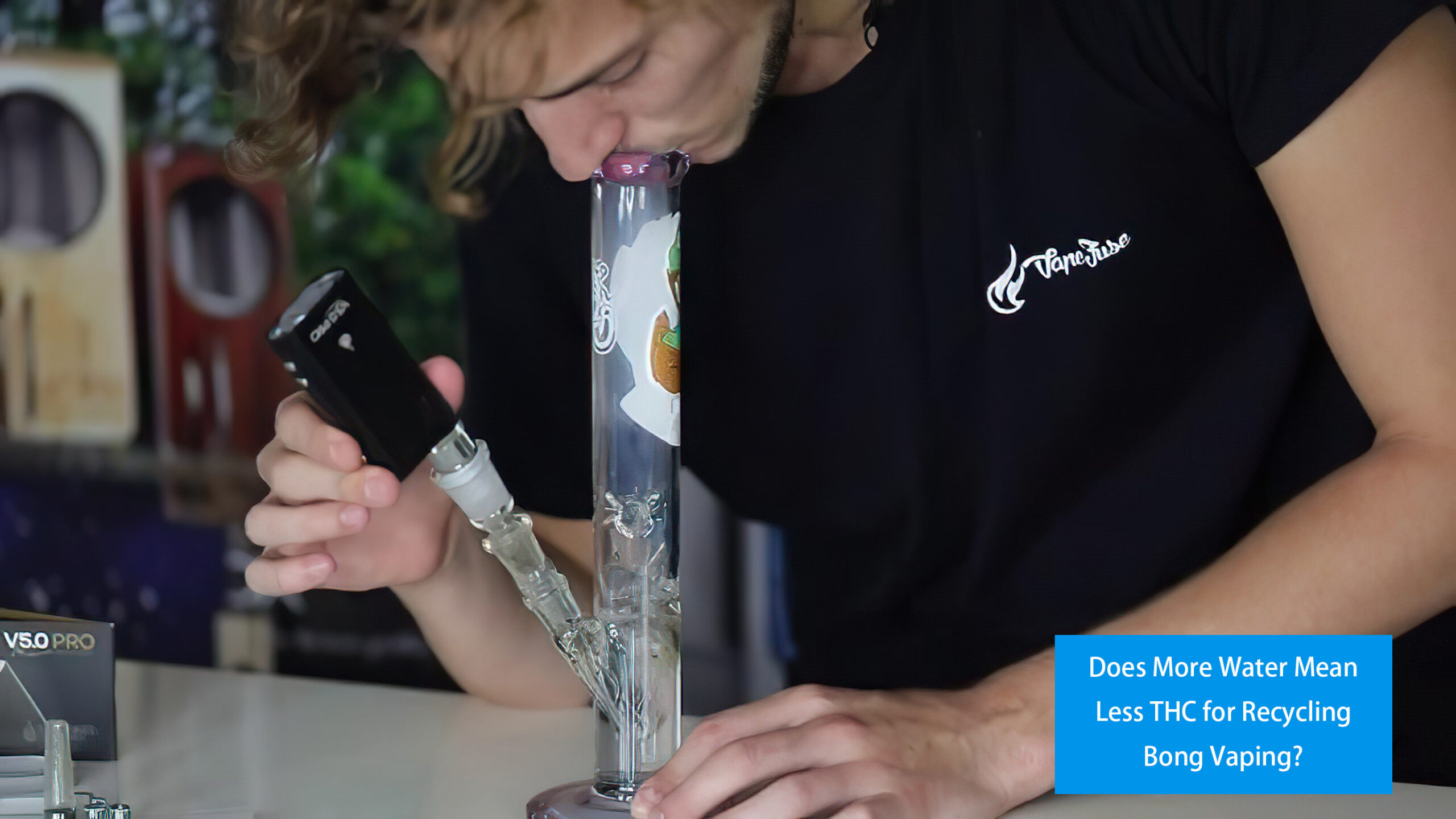
Does more water mean less THC when recycling bong vapor?
Dry herb vaporizers are generally considered healthier than bongs. They heat substances to release active ingredients as vapor without combustion, thereby reducing the absorption of harmful toxins and carcinogens.
However, many users find it difficult to get decent, long hits from a dry herb vaporizer due to the small amounts of vapor, heat, and dryness it delivers.
A bong, specifically percolator bong or recycler bong, is a type of smoking device that uses water to filter and cool the smoke before it reaches the user. Its simple cooling and filtering properties will save many throats.
Once your favorite dry herb vaporizer is connected to the bong, the dry, hot vapor produced by the dry herb vaporizer passes through the bong water, cooling and filtering before reaching your lungs, creating a smoother hit.
However, is it better to have more or less water in my bong? Does more bong water filter out more THC, reducing vaping effects? How much water for a bong?
In this article, we'll dive deep into the science behind water filtration and help you decide whether to add more or less water for your vaping or smoking needs.
What is a Recycler Bong?
A recycler bong is a type of water pipe that uses multiple chambers to filter and cool the smoke before it reaches the user.
These unique smoking devices are popular with both beginners and experienced smokers as they provide a smoother and more enjoyable smoking experience.
These bongs typically consist of two chambers – the first, in which the smoke is first filtered through water, and the second, the so-called recycling chamber. The recycling chamber constantly circulates water and smoke between itself and the first chamber, ensuring a continuous filtering process.
Additionally, recycler bongs are often equipped with different types of percolators or diffusers in both chambers, adding even more filtering and cooling to the smoke. This makes them an excellent choice for those who prefer a cleaner and smoother smoking experience.
Does the water in bongs really help?
Water bongs offer a unique smoking experience and offer advantages over traditional pipes or joints without water, especially when it comes to smoking weed.
Cooling: As the heated cannabis smoke travels through the cold water, its temperature is significantly reduced. This chilled smoke is less harsh on the throat and easier to inhale.
Filtration: The water also acts as a filter, trapping both soluble and insoluble compounds. This process removes unwanted toxins and larger particles such as ash and plant debris from the smoke, resulting in a cleaner hit.
Moisturize the smoke: Water in the bong also helps add moisture to the smoke, which is easier on the respiratory tract compared to the dry heat of smoke from a regular pipe.
Preservation of taste: Some argue that water bongs preserve the taste of weed better. The water filters out heavier particles that could mask the subtle nuances of the weed's flavor profile.
Does bong water filter out THC?
Technically, water binds a very small amount of insoluble THC – about 0.46%. However, this tiny amount is unlikely to affect the overall strength of the hit.
Additionally, using a bong is more difficult compared to other methods of cannabis consumption, such as B. rolled joints or pipes, where much more THC is lost through burning, are much more efficient.
Does more water mean less THC when recycling bong vapor?
The amount of THC lost in bong water is negligible, and many phytocannabinoids and terpenes found in cannabis are nearly water-soluble.
So while more water may mean less THC when recycling bong vapor, the amount is negligible enough that it won't affect your high. Don't worry about it at all.
You'll get over 99.5% of your beloved THC – even more considering most bongs hold less than a liter.
How much water should I put in a bong?
To get the best inhalation experience from a bong, the water level is crucial.
Too much water can result in a difficult stroke as resistance increases with the height of the water.
It also reduces the amount of smoke that can be inhaled, which can be disappointing for those looking for a more intense experience.
Finally, overfilling the bong can cause water to leak through the downpipe into the adapter or the dry herb vaporizer itself, potentially ruining it.
On the other hand, too little water can be just as harmful because it doesn't cool and filter the smoke adequately. This can result in hard blows that cause throat irritation and coughing.
Your bong should have just enough water to cover the downpipe or percolator, about 1/2-1 inch higher, but not so much that it reaches your mouth.
Diploma
Bong water more or less does not filter out THC significantly. Even if a small amount of THC is included in the water, the overall impact on the potency of the hit is negligible.
However, bong water offers numerous benefits such as: B. cooling the smoke and filtering out unwanted toxins and particles.
The ideal water level depends on the size and characteristics of your bong, and experimenting with ice can increase the cooling effect.
Remember that bongs need to be cleaned regularly to prevent the formation of mold and residue, which can affect the taste and cleanliness of the smoke or vapor.

Post a comment: